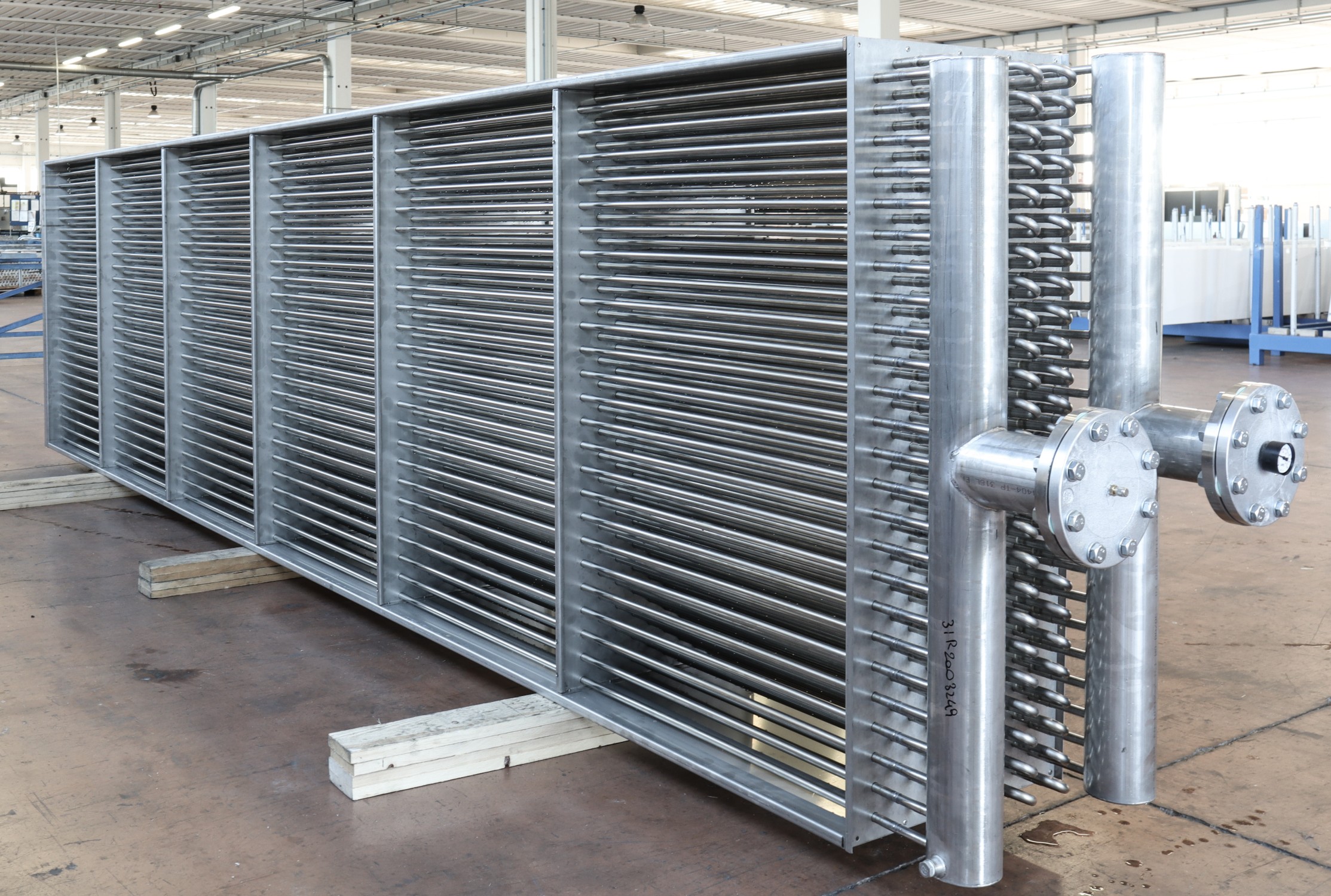When Stainless Steel is the Ideal Choice
Stainless steel heat exchangers are crucial in environments where corrosion and temperature extremes are major factors. They are particularly effective in industrial applications using fluids like demineralized water, ammonia (NH3), or advanced nanotechnological glycols. Additionally, stainless steel is vital for environments prone to corrosion, such as food processing facilities (fish or cheese cold rooms), or where aggressive cleaning and sanifying procedures are necessary. It’s also highly suitable for applications where air temperatures fall below -40°C, such as hydrocooling systems or industries requiring continuous water exposure.

Tailored Solutions for Industrial Needs
ThermoKey’s Expertise in Stainless Steel Heat Exchangers
Since 1995, ThermoKey has been at the forefront of designing and manufacturing customized stainless steel heat exchangers. We provide tailored solutions for a range of applications in the industrial and commercial sectors. Our stainless steel exchangers are used in various systems, including dry coolers, remote condensers, and unit coolers. Original Equipment Manufacturers (OEMs) also rely on ThermoKey for high-quality stainless steel components.


Custom Engineering to Meet Specific Needs
ThermoKey designs exchangers using AISI 304 or AISI 316L stainless steel for both the tubes and casings. Depending on the operational environment, fin materials can vary, includingAISI316L, Aluminum Magnesium, Hydrophobic Blue, and Double Layer coatings. Our products are fully adaptable, offering coil lengths ranging from 0.5 to 12 meters and fin spacing from 2.1mm to 12mm (6mm for AISI316L). Whether your needs are industrial or highly specialized, ThermoKey provides precise thermal solutions, optimizing heat exchange performance and minimizing pressure drops.

Precision and Quality for Maximum Reliability
ThermoKey prioritizes quality to ensure reliability and efficiency in harsh conditions. Our welding process utilizes semi-automatic orbital TIG welding torches under a controlled argon atmosphere to avoid oxidation. Our construction techniques eliminate tube return bends, preventing the accumulation of debris or ice, which could lead to system failures. These meticulous processes help reduce the risk of operational loss, ensuring long-lasting performance and durability.


